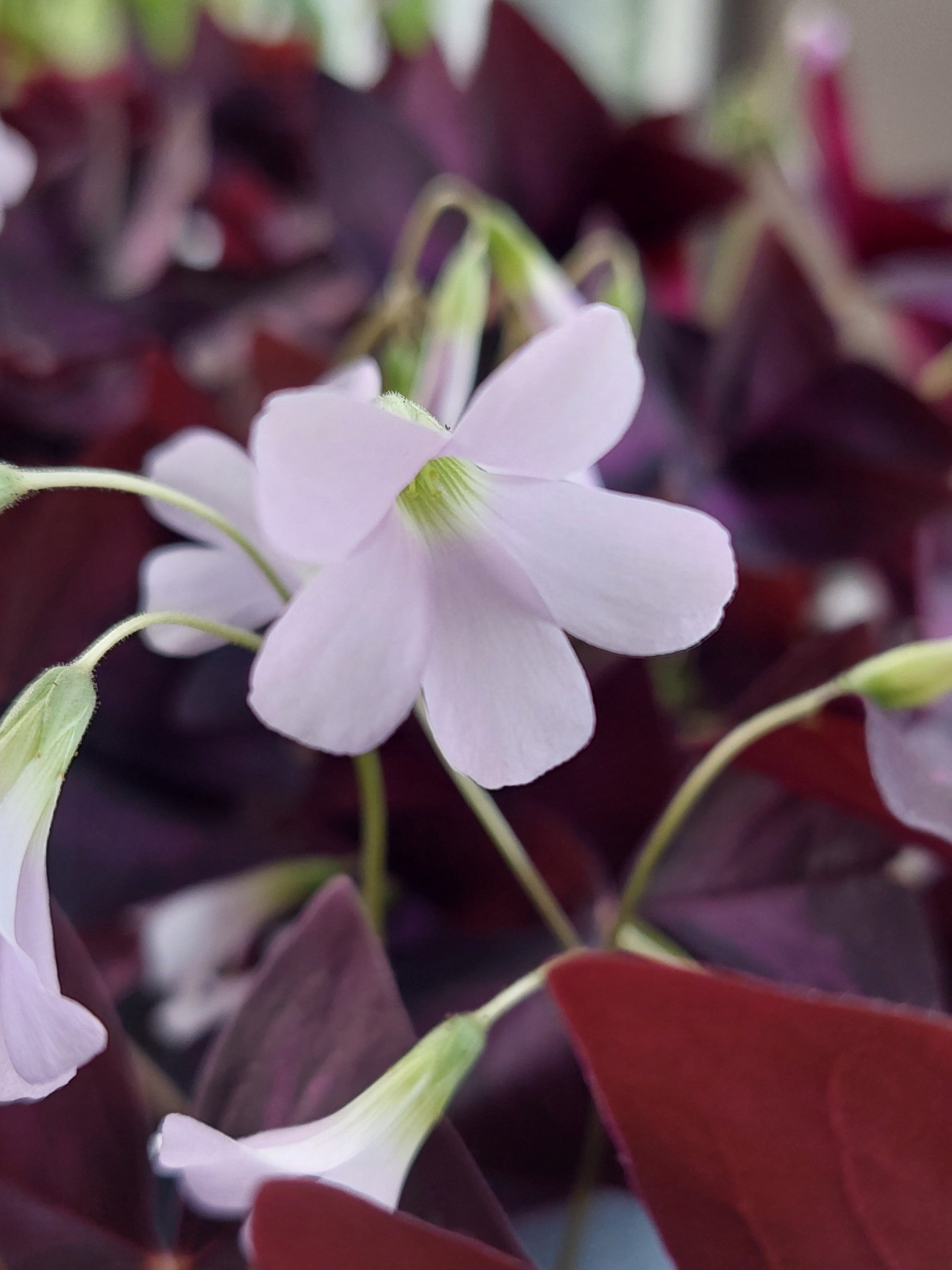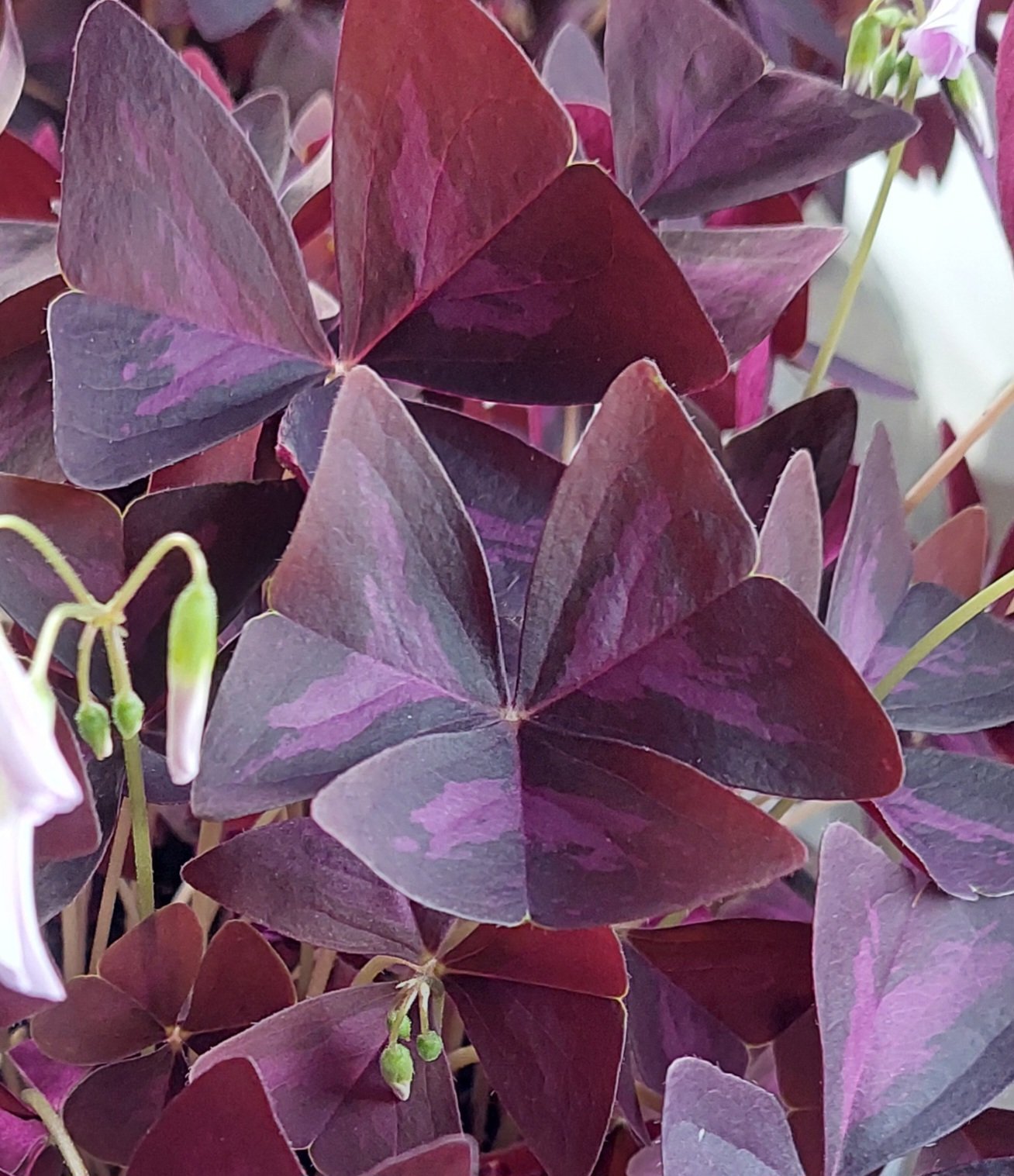
Step into a room with Oxalis triangularis, and it feels like a quiet little story is unfolding on your windowsill. Its deep purple leaves, shaped like tiny triangles, fold and unfold as if breathing — closing gently at night, opening with the morning light. In New Zealand homes, this subtle movement can become a daily highlight, a small reminder that plants live in their own rhythm.
Purple shamrock, or false shamrock as it’s more commonly known, is native to the subtropical regions of southern South America. O. triangularis grows under soft, filtered light, often sheltered beneath taller plants in the wild.

What draws the eye in first are the leaves themselves. Each trifoliate leaf forms a perfect triangle, a deep burgundy that sometimes hints at magenta when the light hits it just right. During flowering, its delicate white or pale-pink blooms appear, almost shyly rising above the dramatic foliage. It’s this combination of bold leaves and delicate flowers that gives the plant an impressive aesthetic.
The plant grows from a tuberous underground stem, underground storage organs that hold its energy. These corms allow it to follow a natural rhythm of growth and rest. In spring and summer, the plant is full of life, its leaves reaching outward, exploring light and space. When the cooler months arrive, the leaves wilt and die back. The corms rest, unseen beneath the soil, storing strength for the next season. This dormancy is part of its charm, a lesson in patience maybe.
Watering is simple if you pay attention. The soil should be kept lightly moist, but never soggy. A little humidity helps, especially in dry indoor conditions, but this plant is forgiving enough that a pebble tray or occasional misting is enough to keep it happy. A balanced fertiliser during the active season encourages vibrant leaves and lots of flowers, but it is not demanding and will also be fine without it. During dormancy, stop watering and let the corms dry out completely and rest over winter. Toward the end of spring, re-pot and start watering.
Interesting facts
Oxalis leaves fold at night, a behaviour known as photonastic movement. This gives the plant a subtle, almost hypnotic motion.
Its purple colour comes from pigments called anthocyanins, which also act as a natural sunscreen for the leaves in strong light.
While generally safe to handle, O. triangularis contains oxalates and should not be eaten by pets.

O. triangularis is valued in small ways — apparently, its leaves and flowers have a tangy flavour thanks to the natural oxalic acid. It can be eaten raw in salads or used as a garnish. However, too much can be harmful.
Some folk traditions mention mild medicinal uses, such as easing digestion or cooling inflammation, but they suggest practice with care and it is not recommended.
It gained the nickname "false shamrock" or "purple shamrock" for its three-part leaves, linking it with the Irish lucky charm. This cultural borrowing helped cement its popularity as a houseplant.












